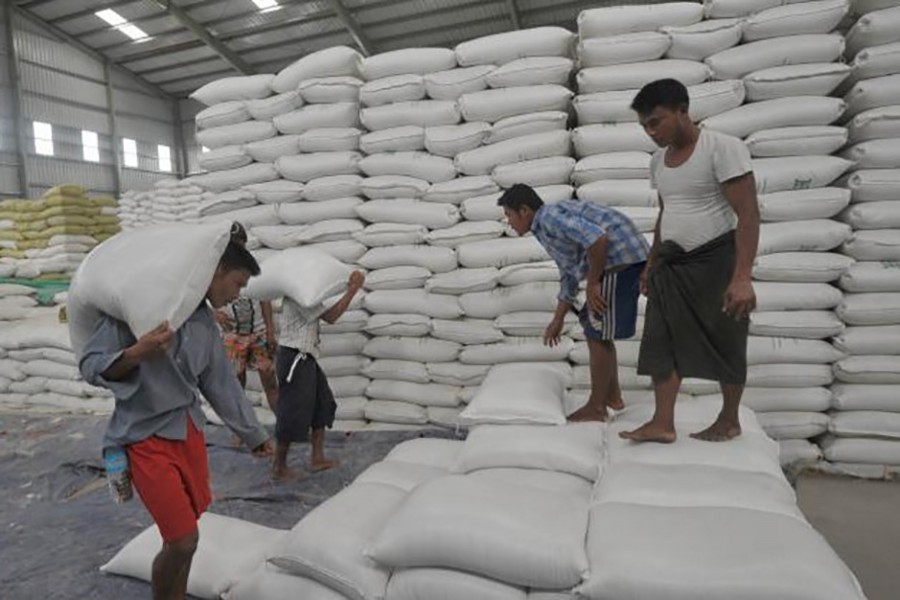
Published :
Updated :

The reported strong pleas from the rice traders to lift ban on rice export has again brought to the fore the issue whether the country has exportable surplus of the cereal. Traders during a meeting held late last week requested the commerce minister to reconsider the ban that has been in place in the case of common varieties of rice for more than a decade. The latter, however, refrained from making any commitment and assured the traders of discussing the issue at appropriate levels.
When Bangladesh exported 50,000 tonnes of rice to Sri Lanka under a government-to-government special deal struck in 2014, there was a raging debate whether the former has an exportable surplus of the food item. The truth is the country has been a net importer of rice for many decades. The volume of import of the main staple depended on its domestic production. In 2017, import of rice by both private and public sectors reached a record level--- nearly 3.2 million tonnes--- when two consecutive floods wrought havoc on boro rice production.
The government also then had cut the duty rates from 28 per cent to only 2.0 per cent on rice import to help tame soaring rice prices in the local market. The domestic food stocks, however, have greatly improved since then due to good harvest in consecutive seasons. The government has raised the import tariff to the previous level and the volume of import of the item has come down to a very low level. The food department's silos do also have sufficient food reserves--- more than 1.2 million tonnes-now.
Against the backdrop of fluctuations in food production, a couple of issues have emerged. Firstly, whether the country is really self-sufficient in food production and, secondly, whether it has exportable surplus. There is no denying that a country where rice remains the main staple does need to meet the domestic consumption need first before considering export of the item. In the case of good harvests, the country does have enough rice to feed its population. But, it has always remained dependent on import for building the food reserve.
The volume of rice import goes up substantially in the event of any crop failure, a very likely development because of the country's high vulnerability to natural calamities such as floods and cyclones. Amidst such uncertainty, the relevant policymakers should take into cognizance the ground realities before allowing export of common rice varieties in what maybe perceived to gain a false sense of pride for the country as a rice exporter.
Besides, there exists a potential danger in the rice export move. As soon as the government allows export of common varieties of rice, the possibility of local market reacting adversely cannot be ruled out. The rice prices that have been otherwise stable in recent months could become volatile again. Under the circumstances, the government might consider allowing the traders to export a limited quantity of aromatic rice. As far as export of other common varieties of rice is concerned, the country should ensure the best agricultural prices to help raise food production that would leave truly exportable surplus. A country that has more than tripled its food production over a period of four decades does surely have the latent capacity to achieve that milestone.


 For all latest news, follow The Financial Express Google News channel.
For all latest news, follow The Financial Express Google News channel.